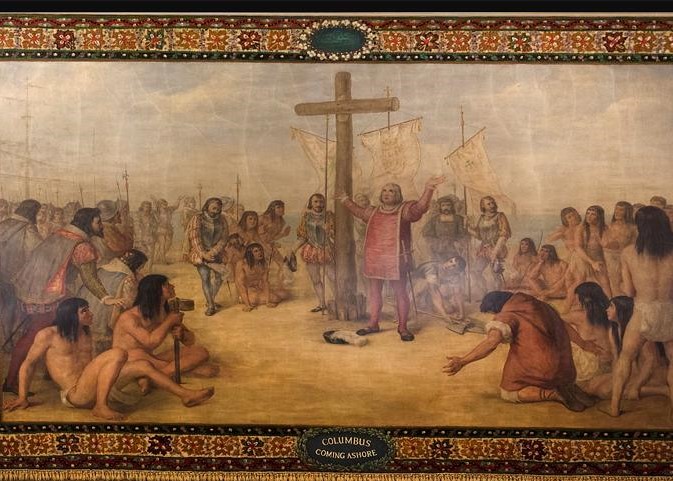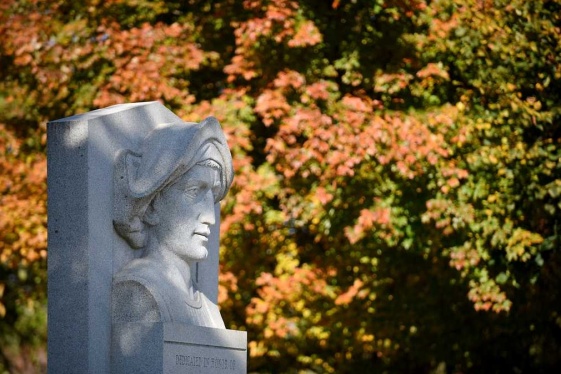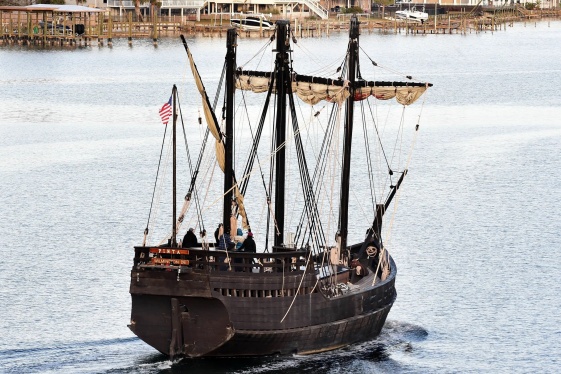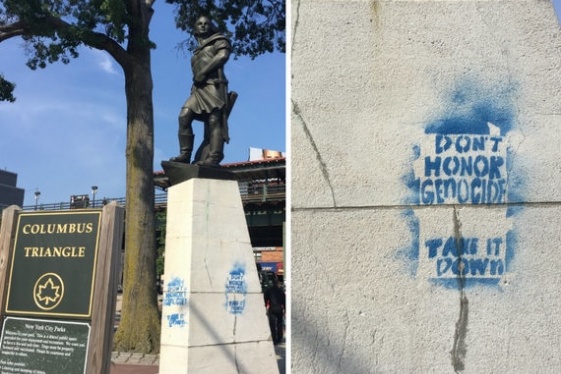
When Art Offends

BY: John Mancini
The University of Notre Dame's decision to cover murals that commemorate the arrival of Christopher Columbus to the New World, can readily be debated as a point of history about an Italian navigator whose genius and grit changed mankind forever…and ultimately for the better. Instead, let’s look at the murals as art.
Art, it seems, is more sacred than anything in liberal America. I know that because for many years I and other proud Italian Americans have been objecting to the relentless deluge of Mafia movies. We claim often that they are insulting, demeaning, and portray our culture as crime ridden and violent. To every charge that we make the answer is always the same: The Godfather is an artistic masterpiece, The Sopranos is a work of art.
The supporting arguments are that Mafia characters are 3-dimensional; they are complex; they are tormented souls, such as Tony Soprano needing a shrink. College courses around the country incorporate Mafia movies into their humanities lectures - see how light and shadow dramatize extortion scenes, how “an offer he can’t refuse” has become universal lexicon, and how murdering your enemies during a Catholic baptism is cinematic genius. On and on, we are rebuffed, belittled, and lectured on the importance of Mafia movies. Of course, the biggest shock is that those defending the “art” of Mafia movies tell us these films are not really about Italians – Italian gangsters are only the “symbols” of America’s turmoil. If this is to be the standard, then the Columbus murals are also American works of art.
Television networks don’t delete Mafia movies from their broadcasts to respect our feelings. Hollywood hasn’t stopped churning them out every year. Why should they? As the MGM motto states Ars Gratia Artis (“Art for Art’s Sake”). We may cover-up pornographic art. We may ban political art or racist art. The Notre Dame murals are none of these – they convey a true story.
In one mural, Columbus is shown in chains with the caption “Bobodilla Betrays Columbus.” This is a historical fact. Columbus was arrested for punishing Spanish colonists who exploited the natives, hence the downcast natives at his side. Other murals show half-naked natives, which they were in 1492. Another mural shows Columbus introducing Christianity to the natives, which he did.
What the murals do not depict – and this may be the real problem – is Spanish cruelty. By the same token, they do not depict native cruelty – Columbus lost 39 of his Santa Maria crew to an Indian massacre – or native cannibalism.
Notre Dame’s knee-jerk reaction to a few students is to cover the murals, as the Italian government did recently with Renaissance statues when some Iranian clerics visited Rome – so as not to offend. This is a sort of Solomonic solution to avoid defending historic art. Notre Dame's President Jenkins claims that the fabric covers will be removed at appropriate times. When, I can’t imagine.
Instead, he plans to photograph the murals and use the reproductions at another location along with the “fuller story” of Columbus’s arrival. Would Francis Ford Coppola, Martin Scorsese, and David Chase allow Italian American activists like me to splice a “fuller” and opposing version onto their “art” for the viewing audience? If the label “art” can protect offensive films, surely expressive 19th Century paintings deserve the same defense.
John Mancini, Executive Director of Italic Institute of America
You may be interested
-
The Italian Heritage Society of Indiana Lect...
Sunday, November 23 - 2 pmWhen: Sunday, November 23, 2014 2:00-4:00 pm Where: UL 1126 in t...
-
'Atmosphere of anger' in Glen Rock and beyond...
The debate over turning Columbus Day into Indigenous Peoples’ Day has people riled up on b...
-
'Columbus' ship Pinta docks in Fort Walton Be...
A little bit of living history will be on display in Fort Walton Beach now through Jan. 2....
-
'Don't Honor Genocide' Graffiti Painted on Co...
The statue of explorer Christopher Columbus that looms over Astoria Boulevard was vandaliz...
-
'Exactly what we were trying to avoid': Chris...
Red paint was splattered across the Christopher Columbus statue in San Antonio's Columbus...
-
'Food is its own time': Carmel's 317 Charcute...
A small restaurant in the city of Perugia, Italy, sticks in Emily Houser's mind when she r...
-
'Iron Chef' to show off authentic Italian mea...
By Jeff Harrell So you think you love Italian food here in America? You go into your...
-
'It is time to return them': Italian-American...
The Joint Civic Committee of Italian Americans (JCCIA) said Mayor Lightfoot and the City o...










